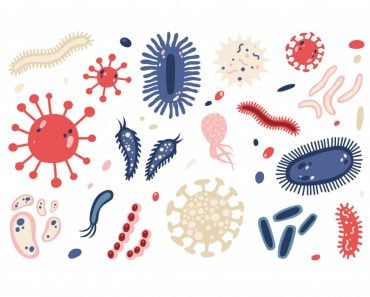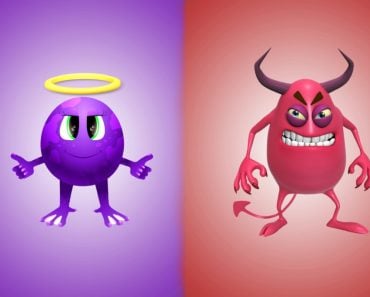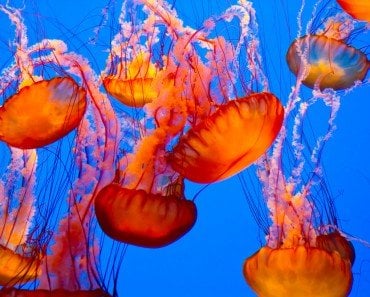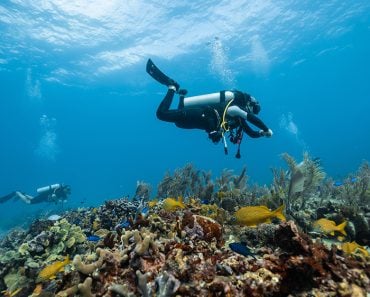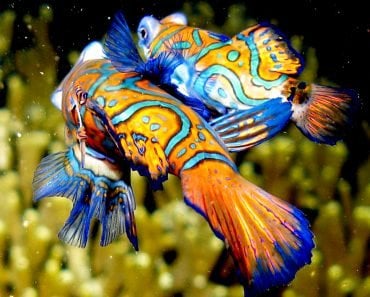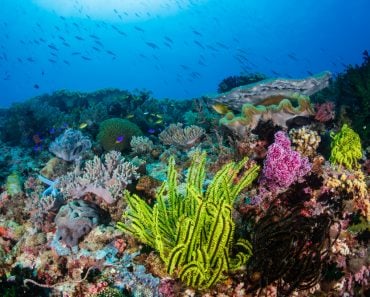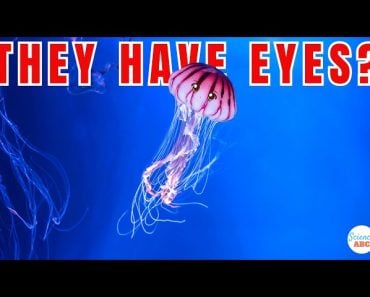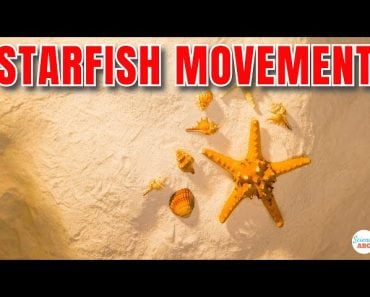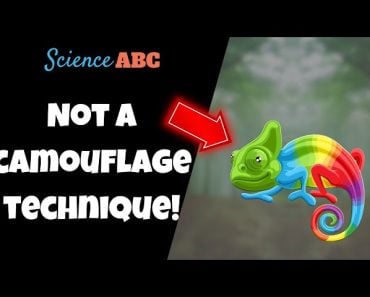Table of Contents (click to expand)
Hawaiin bobtail squid harbor a bacteria called Vibrio fischeri in special organs in their body. The bacteria is bioluminescent, and the light it gives off prevents the squid’s silhouette from being noticeable as it swims in the ocean.
The ocean covers most of our planet and is filled with countless fascinating creatures. These creatures, both plants and animals, are very diverse, each having its own adaptations and specialities that allow it to survive. Some creatures choose to live in symbiosis, but what exactly does that mean? Basically, symbiosis means that some creatures will help other animals, and will in turn receive help themselves.
Symbiosis is sometimes seen in very simple forms. For example, the Bluestreak cleaner wrasse swims right into the mouths of sharks to clean their teeth. In this way, the shark gets a clean mouth that is free of parasites and the wrasse gets a full belly.
However, some forms of symbiosis are not so simple, such as the relationship between the Hawaiian bobtail squid and a special bacteria called Vibrio fischeri.
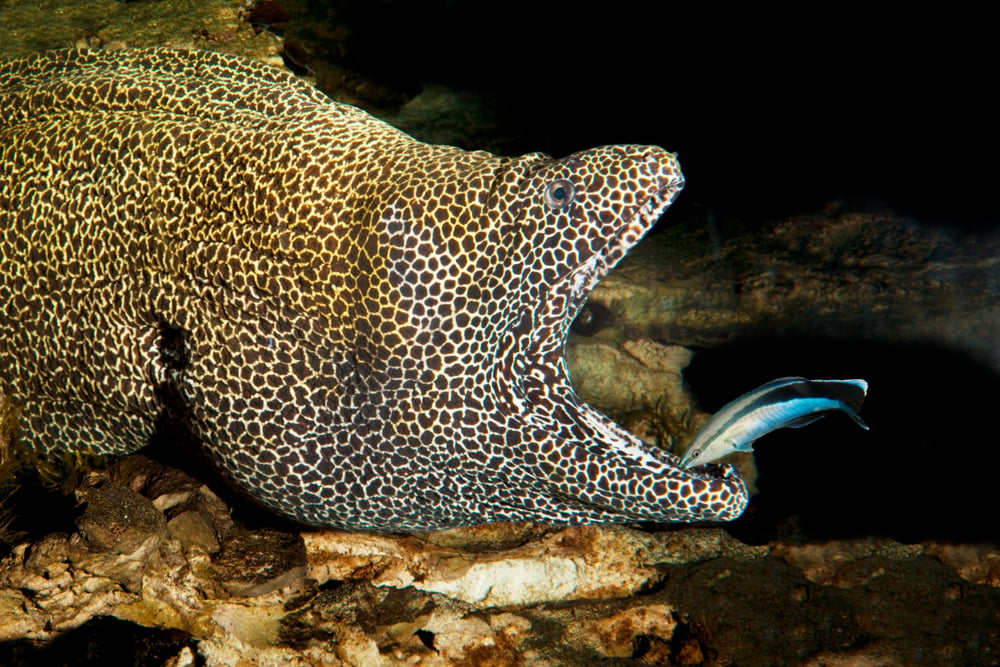
Recommended Video for you:
The Creatures Involved
Hawaiian Bobtail Squid
Squids belong to the class Cephalopoda. This is a group of animals that includes the octopus, cuttlefish and squid. Squids themselves are quite diverse and can look very different from each other. They can be as large as 13 meters (check out this video of a giant squid), but the squid in question for this article is quite a lot smaller than that.
The Hawaiian bobtail squid is only about 3 centimeters long (1.2 inches) and weighs as little as 2.67 grams when fully mature. This tiny size makes them extremely vulnerable to predators. They need some form of protection to help them survive against all the larger fish in the sea, which is where our bacteria comes into play.
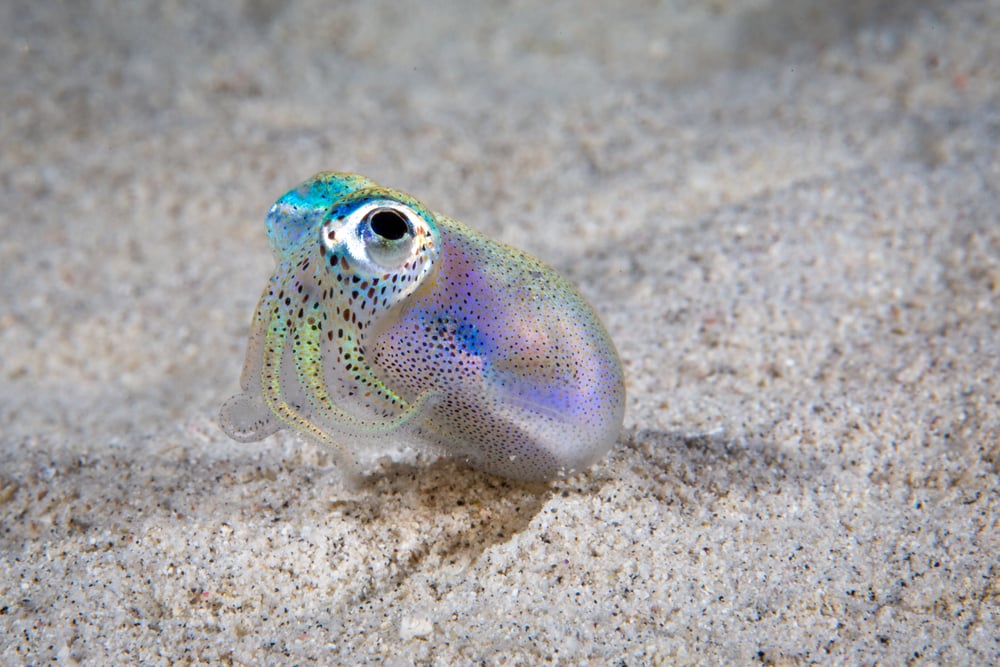
The Bacteria
The bacterial species in the Hawaiian bobtail squid is called Vibrio fischeri.
V. fischeri can glow. Bioluminescence is the ability by which a living creature makes its own light (like this cool mushroom or fireflies). This bacterial glow uniquely protects the Hawaiian bobtail squid from predators.
Camouflage With The Help Of Light
It seems counter-intuitive for a squid that’s trying to hide to flash lights around, almost like a giant ‘Come eat me’ sign, but these squids actually use a very clever technique called counter-illumination.
Imagine this squid swimming in the coastal waters of Hawaii. The light filters through the water, and as you look up, you see a clear outline of a tiny squid swimming above you. Because the squid blocks out the light, it’s quite easy to spot its silhouette. However, if the squid produced its own light, it would cause a break in the silhouette. This would make the squid stand out less against the light filtering through from the ocean’s surface.
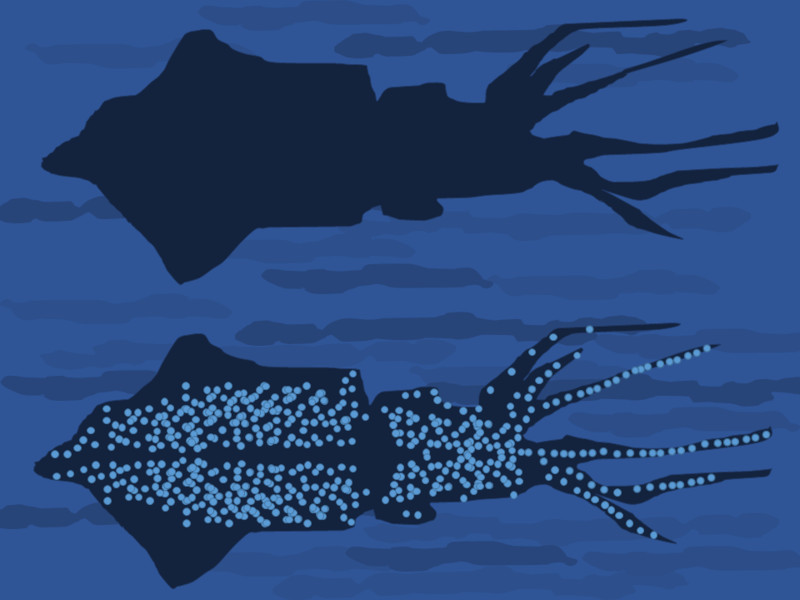
However, this only covers how the squid use the bacteria, not how the bacteria gets inside to begin with.
How Do The Squids Get The Bacteria?
The squids aren’t born with this bacteria in their systems. A clutch of squid eggs will all hatch at the same time, and after they are born, they must get V. fischeri from the surrounding water. The only problem is that V. fischeri make up less than 0.1% of the bacteria in the surrounding waters.
Fortunately, the squids have developed a special mechanism to help counter this issue.
The squids have a special organ that holds the bacteria. The ducts of the organs, through which the bacteria enter, are lined with a distinct mucus.
This mucus stops any bacteria other than V. fischeri from entering the special organs. Once V. fischeri enter the organs, it loses the ability to move around, living and reproducing inside the squid. In return, the squid will feed the bacteria.
Now, the bacteria will live the rest of its life being taken care of by the Hawaiian bobtail squid, and the bacteria will keep the squid harder to spot for predators.
Conclusion
Symbiosis is seen all across nature in various ways, even in ways similar to this one.
There are special bacteria in our own stomachs, for example. They help break complex sugars into easier forms to absorb while getting nutrition from the various things we eat. There are even special bacteria in the roots of certain plants that help with adding nitrogen (an important element for plants to live) into the soil.
Symbiosis benefits both organisms; the Hawaiian bobtail squid and V. fischeri are considered model organisms to help humans understand how these relationships function in nature. There is still a lot to learn about the symbiosis between these two creatures and uncovering more truths about them will hopefully give us an even better understanding of the many different types of animal relationships in nature.
References (click to expand)
- Nyholm, S. V., & McFall-Ngai, M. J. (2021, June 4). A lasting symbiosis: how the Hawaiian bobtail squid finds and keeps its bioluminescent bacterial partner. Nature Reviews Microbiology. Springer Science and Business Media LLC.
- (2008) THE EVOLUTIONARY ECOLOGY OF A SEPIOLID SQUID .... The National Center for Biotechnology Information
- Exploitation and Cooperation by Cleaner Wrasse. sharkresearch.earth.miami.edu
- Giant Squid | Smithsonian Ocean. The Smithsonian Institution
- (2000) Do larger cephalopods live longer? Effects of temperature and .... thecephalopodpage.org
- Bacteria "Feed" on Earth's Ocean-Bottom Crust | NSF. The National Science Foundation
- Fish Using Counterillumination - Smithsonian Ocean. The Smithsonian Institution
- Pudlo, N. A., Urs, K., Kumar, S. S., German, J. B., Mills, D. A., & Martens, E. C. (2015, December 31). Symbiotic Human Gut Bacteria with Variable Metabolic Priorities for Host Mucosal Glycans. (V. Sperandio, Ed.), mBio. American Society for Microbiology.

